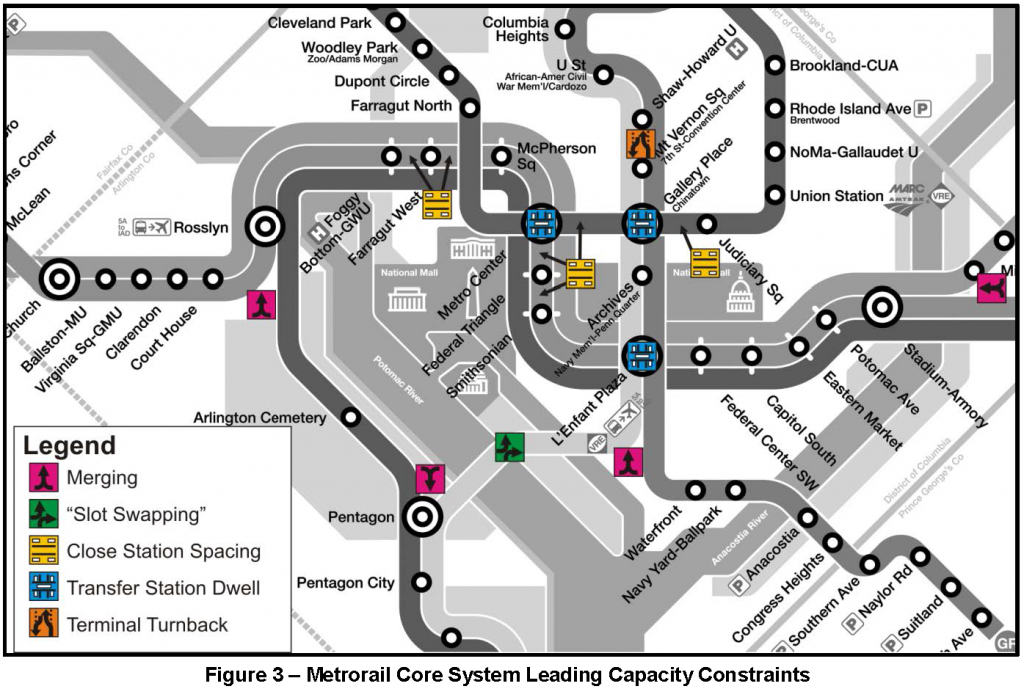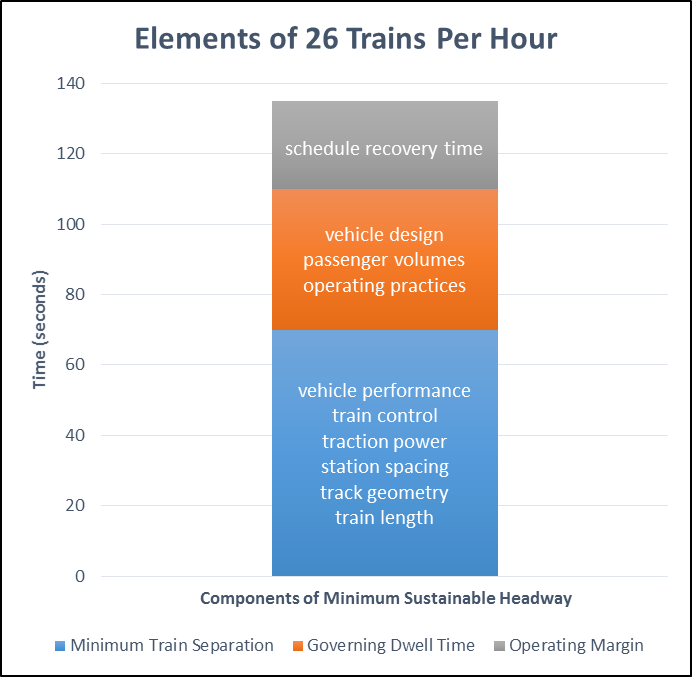Though it has several key constraints, the Metrorail System’s capacity compares favorably with its peers and even out-performs them in several key measures.
In a previous post, we explained that Metro doesn’t schedule more than 26 trains per hour at any point in an effort to balance reliability with high capacity operations. But it also raises some interesting questions: How does Metrorail’s capacity compare to peers? How does Metrorail compare to its peers in terms of train throughput and what are the specific constraints that prevent trains from operating more frequently? Are there any ways to increase the capacity of the existing system beyond 26 trains per hour?
We developed a white paper (PDF) to answer those questions. Some of the findings might surprise some Metroskeptics or armchair transit planners, but Metrorail has among the highest capacity infrastructure in the industry, which – when in a state of good repair – allow it to outperform its peers in a number of key areas.
 Read more…
Read more…
Why can’t Metrorail reliably operate more than 26 trains per hour per direction? A 2001 study defined the basis for determining this constraint.
Although it has been known for years, the July 2014 opening of the Silver Line and corresponding reduction of rush hour Blue Line service highlighted that Metro cannot schedule more than 26 trains per hour (or a train every 2-2.5 minutes) across any point in its rail network. Though it’s been discussed many times through the years, let’s explain this limit in detail now.

Read more…
Secretary Foxx has issued his direction that Metro cannot consider any new rail expansion right now, and WMATA agrees! So much so that we wrote it into our strategic plan back in 2013. Earlier this fall, the Prince William County’s Board of Supervisors heard from WMATA about the importance of fixing Metro’s core before considering any expansion.

The Silver Line’s Phase 2 extension from Wiehle-Reston East to Dulles Airport and Loudoun County could be the last for decades to come. (photo credit: Ryan Stavely, Flickr)
As the region grows, so does the pressure for extensions of Metrorail. The requests are frequent and common: “Extend Metro to BWI! to Centreville! to Waldorf! to Fort Belvoir!” We’ve heard and even modeled most of these requests. For a system that’s shaped and contributed tremendous economic value to the region, it only makes sense that communities outside of its immediate reach want improved access to it. WMATA Director of Planning Shyam Kannan recently took the opportunity to discuss the potential for the extension of Metrorail into Prince William County. With 80% of today’s Metrorail trips going to or through the system’s core (PDF), he noted that major core capacity improvements must be made prior to considering any additional rail extensions. While addressing core capacity has been a major part of Momentum, including initiatives like the 8-car train program, core stations, and New Blue Line Connections, the plan remains largely unfunded. With safety and state of good repair needs as Metro’s top priorities and core capacity relief put off indefinitely, any potential extensions (if they happen) are likely decades away from being built.
Read more…
Categories: Strategies Tags: BRT, commuter rail, core capacity, corridors, expansion, land use, LRT, Metro 2025, Metrorail, Momentum, policy, Streetcar, tod, transit-oriented development





Recent Comments